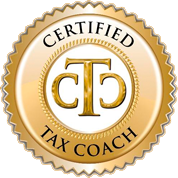By now, everyone has figured out that America’s wealthy and elite are not always avoiding taxes through illegal means. There are thousands of court-tested, law-abiding strategies that help the 1% avoid paying billions of dollars in taxes year after year, like the ProPublica article “The Secret IRS Files: Trove of Never-Before-Seen Records Reveal How the Wealthiest Avoid Income Tax.” Strategies that your average accountant may NOT think of or know how to implement.
However, thanks to Certified Tax Planners, even a small business owner can get the same huge savings the rich do. By investing in and implementing the strategies and services of a Certified Tax Planner, even the average Joe can have a piece of the savings pie.
Planners are not like the typical high-price financial advisors who just give you cookie-cutter ideas on how you can save money. No, these tax professionals are trained to evaluate YOUR unique tax savings opportunities through strategies such as income shifting and gross income reduction, and proactively make changes so you are taking advantage of all of them! Never leaving a savings opportunity unrealized. MUCH more than an accountant merely reporting your taxes!
UNDERSTANDING INCOME LIMITS
Understanding how income limits affect the taxes we pay is fundamental to finding the right strategies. Simply put, they reflect the tax bracket that you fall into and determine the tax benefits you are eligible for.
Location doesn’t help when it comes to Federal tax benefits, since they are implemented nationwide and don’t care if you live in an affordable area or an expensive metropolitan area. This may be confusing due to the differing views of wealth amongst the states.
However, income limits do vary based on the tax provision—one rule or benefit will not necessarily be subject to the same income limits as another one. Most provisions also have “phase-out” ranges where those with a higher income receive a partial benefit, and that amount slowly reduces the higher your income goes. The IRS also provides yearly updates to income limits based on inflation.
STRATEGIES TO REDUCE ADJUSTED GROSS INCOME (AGI)
One strategy that can be used despite your income level is reducing your AGI (adjusted gross income) and TI (taxable income). This method is beneficial because your AGI determines the credits and benefits that you are eligible for. The amount can be realized by taking your total income and subtracting any income adjustments, or your “above the line” deductions.
Some of this process can be accomplished during the current tax year and others can be implemented even after the tax year ends. If you happen to miss the AGI window, benefits can still be given by maximizing itemized (schedule A) deductions. For a better understanding of the timeline and strategies used to achieve this contact a Certified Tax Planner.
Here is our quick summary of options for reducing AGI:
Retirement Savings. This can include individual retirement arrangements (IRAs), employer-provided retirement plans, or self-employed retirement plans.
- IRAs: Even if you do not have a retirement plan through your employer, you may be eligible to contribute to a traditional IRA or Roth IRA. Traditional IRA contributions can be deductible on your tax return, depending on your income and eligibility for employer coverage. Deductible contributions reduce AGI after the close of the tax year but before the due date for your tax return (not including extensions). Roth IRA contributions are not deductible. The contribution limit for both types is $6,000 per year (or $7,000 for taxpayers age 50 and older).
- Employer-provided plans: Participating in an employer 401(k), 403(b), or other salary reduction qualified retirement plan can reduce your AGI and TI. For 2022, the maximum contribution for these plans is $20,500 (or $27,000 for taxpayers age 50 and older). Since the amount you contribute is subtracted from your taxable wages, if your salary is $100,000 per year and you contribute the maximum, your TI will be $79,500.
- Self-employed plans: Self-employed taxpayers can choose from a SEP (simplified employee pension), SEP-IRA, SIMPLE (Savings Incentive Match Plan for Employees), SIMPLE-IRA, or solo 401(k). The contribution limits for these plans are higher than the types listed above, and contributions are deductible as an adjustment to income—thus reducing AGI.
Educator Expenses. In previous years, K-12 teachers were allowed to deduct up to $250 for qualified education expenses (or $500 for married couples filing jointly if both spouses are teachers). In 2022, the maximum deduction increases to $300 (or $600 for two married educators).
Self-Employed Health Insurance Deduction. If you are self-employed and pay for your own health insurance, you can deduct your premiums as an adjustment to your income. This deduction also coordinates with the Premium Tax Credit. To qualify, you must:
- not be eligible for subsidized health insurance (such as an employer plan or COBRA)
- have a policy that is established by your business or sole proprietorship
- confirm that the deduction does not exceed the earned income from the business
Student Loan Interest Deduction. Taxpayers can deduct up to $2,500 of student loan interest paid during the year. Your lender should provide Form 1098-E showing the amount of interest you pay each year. For 2021 tax returns, this deduction phases out between $70,000 to $85,000 in modified AGI (or $140,000 to $170,000 for married filing jointly). However, you cannot double-dip by claiming interest paid via a 529 plan or your employer’s educational assistance program.
Health Savings Accounts (HSA). HSA contributions are eligible for an above-the-line deduction. To have an HSA, you must enroll in a high-deductible health plan (HDHP). For 2022, the maximum contribution limit is $3,650 (or $4,650 for taxpayers aged 55 and older) for self-only coverage. For family coverage, the contribution limit is $7,300 (or $8,300 for taxpayers age 55 and older). To dive deeper into the details, see our recent Think Outside the Tax Box article on tax planning with HSAs.
EXAMPLES: REDUCING AGI
Example #1: Indira was curious about how the amount she contributed to her IRA would affect her tax savings. She was over the moon to discover that by using a traditional IRA and contributing at least $5,750 she could not only reduce her AGI/taxes but also would be eligible to receive a $200 saver’s credit.
Example #2: Lara and Michael were thrilled when they discovered limited-income subsidized housing in their area. Unfortunately, they exceeded the wage cap and did not qualify. Luckily, with the help of their Certified Tax Planner, they learned that they were able to find a way to reduce their AGI, just in time for the deadline. By doing so, they reduced their AGI and qualified for housing.
SUMMARY Taxpayers across all income levels are reducing not only their taxable income but their tax payments as well. Working with a Certified Tax Planner, preferably prior to the tax deadline, can help to discover all the savings you are eligible for, but haven’t taken advantage of proactively.
To find a Certified Tax Planner near you, click here.
Click here to read Part 2 of this article for more tax savings ideas.






